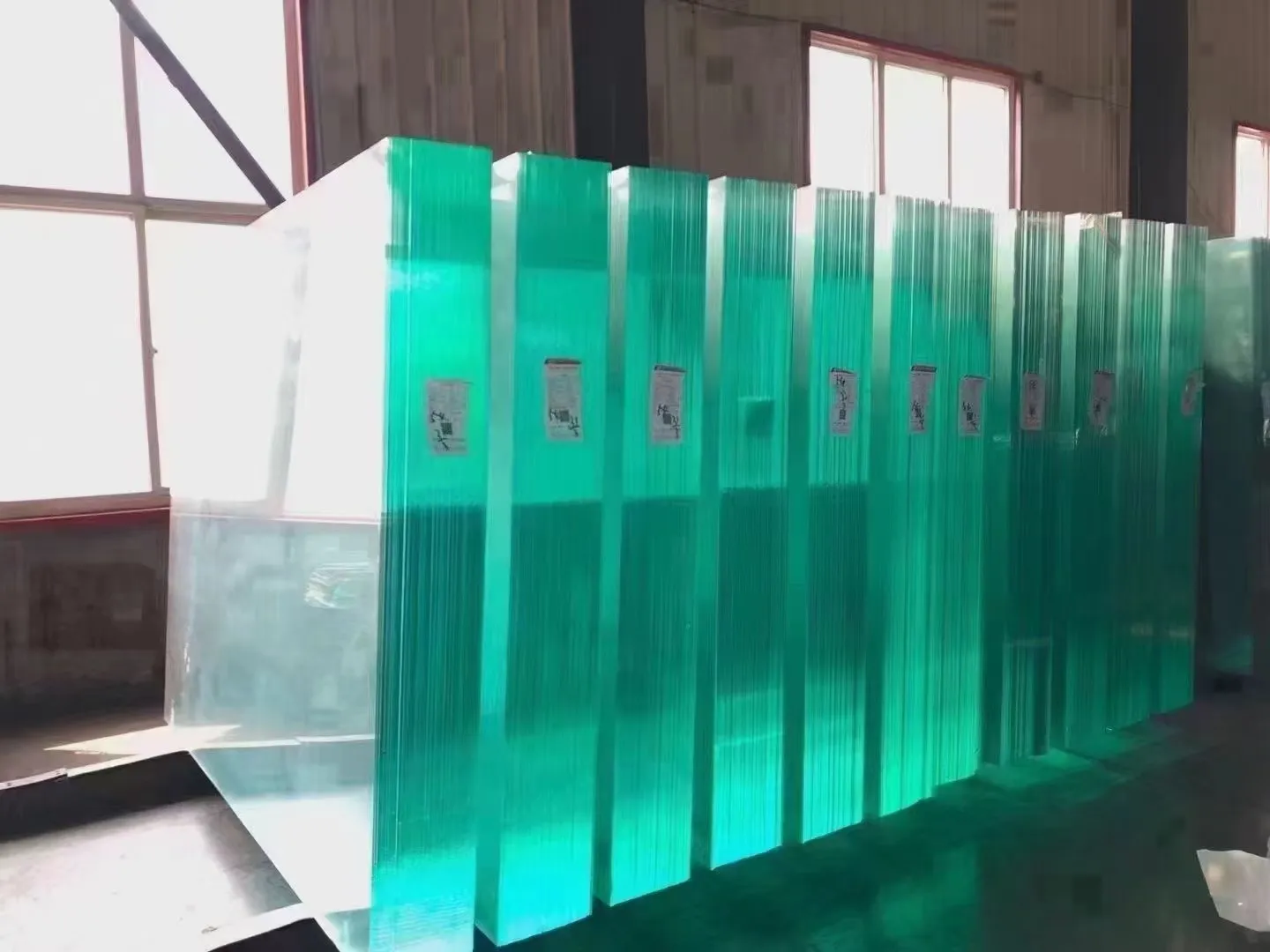Float glass production is an innovative and highly technical process that plays a vital role in modern architecture, automotive industry, and various other sectors. This method was first introduced in the early 20th century and has since revolutionized the glass manufacturing industry.
The float glass process begins with raw materials, primarily silica sand, soda ash, limestone, and recycled glass. These ingredients are accurately measured and mixed together in a melting furnace, where they are heated to temperatures exceeding 1700°C. This intense heat transforms the mixture into molten glass.
Once the molten glass reaches the desired consistency, it is then poured onto a bed of molten tin in a continuous ribbon. The use of tin as a float surface is critical due to its low chemical reactivity, ensuring the glass remains uncontaminated. As the glass floats on the tin, it spreads evenly and cools slowly, giving it an unparalleled optical clarity and flatness. This step is the essence of the float glass technique, differentiating it from other glass manufacturing methods.
After cooling, the glass ribbon is gradually solidified and transferred to annealing lehrs. Here, it undergoes a controlled cooling process to relieve internal stresses and make it more durable Here, it undergoes a controlled cooling process to relieve internal stresses and make it more durable

Here, it undergoes a controlled cooling process to relieve internal stresses and make it more durable Here, it undergoes a controlled cooling process to relieve internal stresses and make it more durable
 float glass production
float glass production. The glass then moves through cutting machines, where it is cut to the required sizes and shapes for various applications.
Float glass production is not only known for its high-quality output but also for its efficiency. The process allows for large-scale production, reducing waste and increasing productivity. Moreover, the uniformity and thickness control achieved through this method make float glass ideal for energy-efficient windows, mirrors, and architectural designs.
In recent years, the float glass industry has seen advancements in sustainability, with efforts to reduce energy consumption and emissions. Producers are investing in technologies to recycle waste glass and harness renewable energy sources, making the process even more eco-friendly.
In conclusion, float glass production is a testament to human innovation and engineering prowess. Its ability to produce large quantities of high-quality, optically perfect glass has made it indispensable in numerous industries. As technology continues to evolve, the future of float glass production promises further improvements in efficiency, sustainability, and product versatility.
 Afrikaans
Afrikaans  Albanian
Albanian  Amharic
Amharic  Arabic
Arabic  Armenian
Armenian  Azerbaijani
Azerbaijani  Basque
Basque  Belarusian
Belarusian  Bengali
Bengali  Bosnian
Bosnian  Bulgarian
Bulgarian  Catalan
Catalan  Cebuano
Cebuano  Corsican
Corsican  Croatian
Croatian  Czech
Czech  Danish
Danish  Dutch
Dutch  English
English  Esperanto
Esperanto  Estonian
Estonian  Finnish
Finnish  French
French  Frisian
Frisian  Galician
Galician  Georgian
Georgian  German
German  Greek
Greek  Gujarati
Gujarati  Haitian Creole
Haitian Creole  hausa
hausa  hawaiian
hawaiian  Hebrew
Hebrew  Hindi
Hindi  Miao
Miao  Hungarian
Hungarian  Icelandic
Icelandic  igbo
igbo  Indonesian
Indonesian  irish
irish  Italian
Italian  Japanese
Japanese  Javanese
Javanese  Kannada
Kannada  kazakh
kazakh  Khmer
Khmer  Rwandese
Rwandese  Korean
Korean  Kurdish
Kurdish  Kyrgyz
Kyrgyz  Lao
Lao  Latin
Latin  Latvian
Latvian  Lithuanian
Lithuanian  Luxembourgish
Luxembourgish  Macedonian
Macedonian  Malgashi
Malgashi  Malay
Malay  Malayalam
Malayalam  Maltese
Maltese  Maori
Maori  Marathi
Marathi  Mongolian
Mongolian  Myanmar
Myanmar  Nepali
Nepali  Norwegian
Norwegian  Norwegian
Norwegian  Occitan
Occitan  Pashto
Pashto  Persian
Persian  Polish
Polish  Portuguese
Portuguese  Punjabi
Punjabi  Romanian
Romanian  Russian
Russian  Samoan
Samoan  Scottish Gaelic
Scottish Gaelic  Serbian
Serbian  Sesotho
Sesotho  Shona
Shona  Sindhi
Sindhi  Sinhala
Sinhala  Slovak
Slovak  Slovenian
Slovenian  Somali
Somali  Spanish
Spanish  Sundanese
Sundanese  Swahili
Swahili  Swedish
Swedish  Tagalog
Tagalog  Tajik
Tajik  Tamil
Tamil  Tatar
Tatar  Telugu
Telugu  Thai
Thai  Turkish
Turkish  Turkmen
Turkmen  Ukrainian
Ukrainian  Urdu
Urdu  Uighur
Uighur  Uzbek
Uzbek  Vietnamese
Vietnamese  Welsh
Welsh  Bantu
Bantu  Yiddish
Yiddish  Yoruba
Yoruba  Zulu
Zulu 

 Here, it undergoes a controlled cooling process to relieve internal stresses and make it more durable Here, it undergoes a controlled cooling process to relieve internal stresses and make it more durable
Here, it undergoes a controlled cooling process to relieve internal stresses and make it more durable Here, it undergoes a controlled cooling process to relieve internal stresses and make it more durable